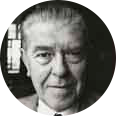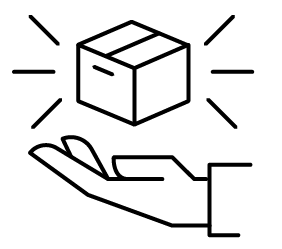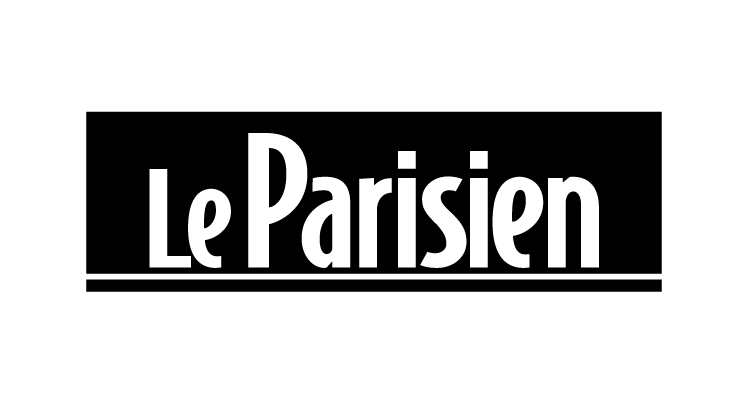Artwork of René Magritte artprints & posters
René Magritte, a painter inseparable from the surrealist movement that took place in the 20th century, left his mark on his era with paintings whose meaning is still debated and analysed today by specialists such as Michel Draguet. With his friends Mariën, Mesens, Nougé, Lecomte and Irène Hamoir, Magritte imposed his vision of art, pushing surrealism to its limits and creating a genuine Belgian subdivision of the movement, thanks to more than 1500 paintings, but also to his involvement in magazines focusing on surrealist art. Discover the works of René Magritte with ‘La trahison des images’ (The Treachery of Images), and his famous representation of a pipe, ‘L'homme au chapeau melon’ (The Man with the Bowler Hat), considered one of the artist's most famous works, or his painting ‘La Moisson’ (The Harvest), a testimony to a page of the Belgian artist's impressionist period.
Treat yourself to a page from the history of surrealist painting with a reproduction of René Magritte available in the catalogue, and discover the biography of this facetious and unique painter, whose work leads us to question our perception of reality.
Biography of René Magritte
Birth and childhood: René Magritte's family
Born in 1898 in Lessines, Belgium, south of Brussels, René Magritte was born into a family working in ready-to-wear clothing, his father being a tailor and his mother a milliner. With his brothers Paul and Raymond, René Magritte and his family soon settled in the Charleroi suburb of Châtelet, where he took his first painting lesson from Félicien Defoin and produced his first drawings around 1910.
Particularly interested in literature, and after moving to Charleroi following his mother's suicide, Magritte met Georgette Berger in 1913, who would subsequently write an important page in the artist's life.
René Magritte's training and early career as a decorator and poster designer
By 1915, Magritte had already started to produce drawings and paintings on a more regular basis. Wishing to devote himself fully to art, the young Belgian painter stopped his studies to move to Brussels and enrol at the Academy of Fine Arts as an independent auditor. For three years, he rubbed shoulders with specialists in symbolism and art nouveau, styles that were very much in vogue at the time, particularly among poster artists, and he learnt about literature. It was also during this period that René Magritte honoured commissions as a poster designer, but also for decorative painting, and that he became involved in the creation of a magazine with his friends Pierre and Victor Bourgeois. He also took part in his first exhibitions in 1920, where he met Édouard-Léon-Théodore Mesens. In the same year, he met Georgette Berger by chance, having lost touch with her in 1914. He married her in 1922, just after completing his military service and starting work as a draughtsman for the wallpaper manufacturer Peters-Lacroix.
René Magritte and the Dadaists
In Brussels, in the early 1920s, the Dada movement, although on the wane, gradually giving way to Surrealism, promoted in France by artists such as André Breton, was still enjoying a certain degree of success. It was therefore only natural that, after meeting Marcel Lecomte, who introduced him to the work of Giorgio de Chirico, ‘Chant d'amour’, René Magritte became involved with this circle of free thinkers who challenged all established conventions.
Already in contact with Lecomte and Mesens, who was also seduced by this movement, Magritte also became close to other artists following this trend, such as the writer Camille Goemans, the poets Louis Scutenaire and Paul Nougé, and the poet and novelist Irène Hamoir. With this group, which rethought painting, literature and a whole way of seeing the world of the arts, Magritte contributed to numerous magazines between 1922 and 1925 in order to put forward his ideas. Still producing few paintings at that time, he worked as a freelancer for several companies, and his drawings could be seen in theatrical works, films and even advertising posters. René Magritte and Surrealism
From 1926, together with Irène Hamoir, Louis Scutenaire, Paul Nougé, Camille Goemans, Mesens and Marcel Lecomte, René Magritte leaned more and more towards surrealism, and became one of its spearheads in Belgium. From then on, the artist's output increased, and the Belgian painter began to produce a number of surrealist drawings and paintings. In 1927, he even exhibited more than fifty paintings in Brussels, while continuing his work as an illustrator in order to be able to make a decent living from his art. In the same year, René Magritte left Brussels for Paris, where Goemans ran a gallery and enabled him to exhibit in the French capital. During his three years in the city of light, the Belgian painter met the French and foreign surrealists who lived in the city, such as André Breton, Paul Éluard and Salvador Dali, and threw himself into everything related to this artistic movement. After returning to Belgium due to the 1929 crisis, René Magritte became close to Paul Colinet and Marcel Mariën, among others, and exhibited in art strongholds such as Brussels, Paris, New York and London.
However, the Belgian artist was once again forced to leave his country following the invasion of Belgium by Nazi Germany, leaving behind his wife Georgette, who began a relationship with Colinet. He travelled to Carcassonne with Irène Hamoir and Louis Scutenaire, but returned to Brussels just three months later to be reunited with his wife, with whom he reconciled.
René Magritte's plein air painting
From 1943, René Magritte wanted to develop his art, and set out in search of new ways of painting. It was in front of the works of Auguste Renoir that the surrealist artist had an epiphany, and decided to borrow the technique of the Impressionists in order to create surrealist images.
His painting ‘La Moisson’, painted in 1943, is totally representative of what Magritte himself would call his ‘full sunlight painting’, with a technique totally borrowed from the Impressionist arts, but with colours derived from Surrealism. For Magritte and the Belgian surrealists, using impressionism at the heart of surrealist art made it possible to highlight the poetry of the world and pleasure, in contradiction with the dark period of the war. However, in Paris, this way of thinking about surrealism was seen as crude by French artists.
René Magritte's tough period
Around 1946 and 1947, at the end of his ‘sunny period’, Magritte began to paint a few works with deliberately coarse features, in response to criticism from Parisian artists about his use of impressionist techniques. In 1948, for six weeks, and to go even further, the Belgian painter produced some forty canvases presenting a gallery of colourful characters, crudely painted compared to his pre-war painting, for which he was renowned in the art world. These images, presented on the occasion of his first solo exhibition in Paris, quickly caused a scandal and were booed by critics. Artists, dealers and collectors alike expressed their incomprehension and quickly declared themselves scandalised by these works, which were seen as boorish and inelegant. Although the exhibition was a commercial failure, René Magritte's aim of baffling the Parisian art world was a success. However, faced with the lack of enthusiasm of his wife Georgette, he did not return to this style known as the ‘vache period’, but returned to his pre-war style of painting.
Public recognition for René Magritte
In the early 1950s, a number of retrospectives of René Magritte's work were presented in Brussels, notably through his friend Mesens, who organised the first of these at the city's Centre for Fine Arts. But success would come mainly from the United States and New York, where Alexandre Iolas, who ran the ‘Hugo Gallery’, promoted the Belgian artist's paintings. This work to democratise the work of René Magritte paid off, and in 1965 a major retrospective was organised at the Museum of Modern Art in New York, before touring the United States. Finally recognised across the Atlantic, public success, outside the world of the arts alone, led to a final retrospective organised in Europe at the Boijmans Van Beuningen Museum in Rotterdam. End of life and legacy of René Magritte in the art world
In increasingly poor health from the 1960s onwards, René Magritte regularly travelled to Italy for treatment, accompanied by his wife Georgette and his long-standing friends Louis Scutenaire and Irène Hamoir. In 1967, in Schaerbeek, he succumbed to pancreatic cancer, leaving behind him between 1500 and 2000 paintings, like a true page of Belgian art.
Although many writings about the artist were published during his lifetime, such as those by Marcel Mariën, after his death and up to the present day, true specialists, such as Michel Draguet, the director of the Royal Museums of Fine Arts of Belgium, have taken up the subject of Magritte in order to analyse his work. Numerous retrospectives were also devoted to the artist, whose popularity only grew among the general public with famous paintings such as ‘The Man in the Bowler Hat’ and ‘The Treachery of Images’.
From the Musée d'Art Moderne in Paris to the Museum of Modern Art in New York, among many others, the exhibition of Magritte's paintings will be regularly showcased around the world, and as proof of his fame and impact, the Belgian painter will even have a museum entirely dedicated to him in Brussels: the Musée Magritte Museum.
The René Magritte style, between humour and the study of symbols
Considered one of the great pioneers of surrealism, René Magritte developed a distinct visual style that combines humour and the scholarly study of symbols. His approach to art thus focused on transforming ordinary objects and subjects into enigmatic images, as demonstrated by his famous painting ‘The Man in the Bowler Hat’ and his canvas ‘The Treachery of Images’. The analysis of Magritte's paintings and drawings leads specialists such as Marcel Mariën in his time, or Michel Draguet more recently, to highlight the way in which reality is perceived by the Belgian surrealist artist. For Michel Draguet and other analysts of René Magritte's work, the artist manipulates familiar subjects and transforms the pages of our visual expectations, thus creating images that are both comical and disconcerting. Never leaving one indifferent, and often with humour or a spirit of contradiction, Magritte expressed his surrealist ideas through his paintings and exhibitions, but also helped to establish surrealism in the art world through the medium of magazines, often in collaboration with other artists such as Marcel Mariën Irène Hamoir, Paul Nougé, Marcel Lecomte, Louis Scutenaire and Camille Goemans, who formed the Belgian Surrealist Group. Within these pages, Magritte was able to develop his ideas on art, objects and representation even further, reinforcing his commitment to the philosophical depth of his paintings.
Learn more about the life and the works of René Magritte.

























